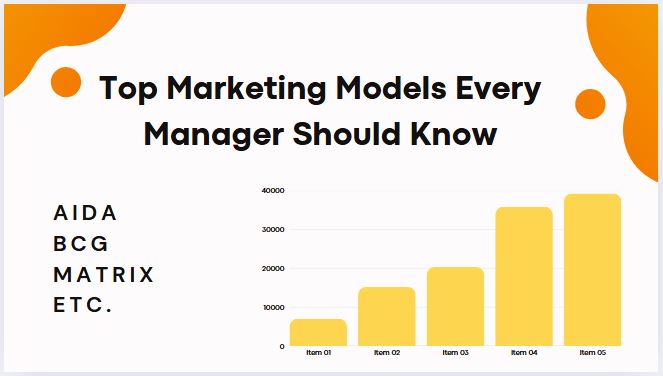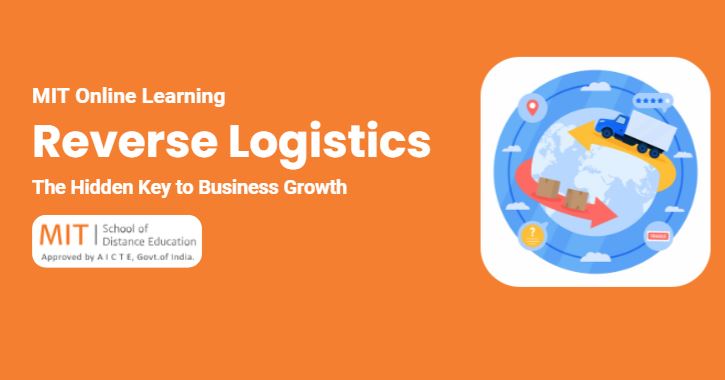
In today’s competitive business environment, having a deep understanding of marketing models is vital for marketing professionals, managers, and students. Whether you’re enrolled in a PGDM in Marketing, considering a PG Diploma for Marketing Management, or working as a brand strategist, these models serve as essential tools for making informed and effective decisions.
From understanding customer behavior to managing product portfolios, marketing models help simplify complex strategies and provide a structured approach to planning and execution. Let’s explore the most influential marketing models every manager should master, especially if you are studying marketing management in MIT Colleges or through online marketing management in MITSDE College.
1. AIDA Model: Guiding the Customer Journey
The AIDA model stands for Attention, Interest, Desire, and Action. This classic marketing model describes the steps a consumer goes through before making a purchase.
Breakdown:
- Attention: The customer notices your brand through an ad, email, or social media.
- Interest: They become curious and want to learn more.
- Desire: They begin to want the product, influenced by its benefits or emotional appeal.
- Action: They take the final step—purchase, subscription, or sign-up.
Application:
This model is often introduced early in a PGDM in Marketing program as it is foundational to understanding marketing funnels. It’s used in advertising, content marketing, sales strategies, and more.
In online marketing management in MITSDE College, students use AIDA to build digital campaigns that successfully guide users from awareness to conversion.
2. BCG Matrix: Strategic Product Portfolio Management
Developed by the Boston Consulting Group, the BCG Matrix helps companies evaluate their product portfolio and decide where to invest, develop, or discontinue.
Four Categories:
- Stars: High market growth, high market share. Products worth investing in.
- Cash Cows: Low growth, high share. These are profit-generating machines.
- Question Marks: High growth, low share. Risky but potentially rewarding.
- Dogs: Low growth, low share. Often candidates for divestiture.
Application:
In any PGDM in MIT program, especially those focused on market analysis, this model is taught for strategic decision-making. Managers use it to balance short-term cash flow with long-term growth.
For students enrolled in PG diploma for marketing management, understanding the BCG matrix is crucial for roles in product and brand management.
3. STP Model: Segmentation, Targeting, Positioning
The STP model is one of the most important frameworks in marketing. It helps businesses identify their ideal customer and position their product effectively.
Components:
- Segmentation: Divide the market by demographics, geography, behavior, or psychographics.
- Targeting: Choose which segment to serve.
- Positioning: Develop messaging that speaks directly to that segment’s needs and wants.
Application:
In programs like Marketing management in MIT Colleges, STP is taught through real-world case studies. It’s especially relevant in digital marketing, where hyper-targeting is possible.
For professionals pursuing PGDM in market managers, this model lays the groundwork for campaign planning and customer acquisition strategies.
4. Porter’s Five Forces: Analyzing Market Competitiveness
Michael Porter’s Five Forces is a framework for assessing the competitive dynamics of an industry.
The Five Forces:
- Competitive Rivalry: Intensity of competition among existing firms.
- Threat of New Entrants: Ease with which new players can enter the market.
- Bargaining Power of Suppliers: Suppliers’ ability to influence prices.
- Bargaining Power of Buyers: Customers’ influence over pricing and terms.
Threat of Substitutes: Risk of products that can replace yours.
Application:
Students in online marketing management in MITSDE College use this model to assess new market opportunities. It’s a vital tool in strategic planning, mergers, acquisitions, and market entry.
5. The 7Ps Marketing Mix: A Broader Marketing Strategy
An extension of the original 4Ps, the 7Ps marketing mix offers a more comprehensive framework, especially for service-based industries.
Elements:
- Product: What you’re selling.
- Price: The value exchange.
- Place: Channels of distribution.
- Promotion: Communication strategies.
- People: Employees and stakeholders involved in delivering service.
- Process: Operational workflows.
- Physical Evidence: Tangible elements like brochures, websites, or office design.
Application:
In a PGDM in marketing program, mastering the 7Ps is essential. It’s heavily used in service marketing, brand positioning, and marketing audits.
Students at MITSDE College develop strategic plans using the 7Ps to ensure they address every aspect of the marketing lifecycle.
6. Customer Journey Mapping: Creating Better Experiences
Customer Journey Mapping is a model that illustrates the steps customers go through when interacting with a brand.
Stages:
- Awareness: First exposure to the brand.
- Consideration: Research and comparison.
- Purchase: Decision-making and transaction.
- Retention: Follow-up, support, and satisfaction.
- Advocacy: Sharing positive experiences, referrals.
Application:
This model is crucial in digital and content marketing. It helps marketers identify pain points and improve user experience (UX).
In a PG diploma for marketing management, journey mapping is often paired with tools like CRM software and Google Analytics for hands-on learning.
7. SWOT Analysis: Understanding Internal and External Factors
SWOT Analysis stands for Strengths, Weaknesses, Opportunities, and Threats.
Key Components:
- Strengths: Internal capabilities and resources.
- Weaknesses: Internal limitations.
- Opportunities: Market trends and external chances to grow.
- Threats: External risks and challenges.
Application:
In the PGDM in MIT curriculum, SWOT is used in business planning and marketing strategy development. It is also part of project reports and market feasibility studies.
8. Ansoff Matrix: Growth Strategy Planning
The Ansoff Matrix helps companies plan growth strategies based on products and markets.
Four Strategies:
- Market Penetration: Increase sales in current markets with current products.
- Market Development: Enter new markets with existing products.
- Product Development: Create new products for existing markets.
- Diversification: Launch new products in new markets.
Application:
This matrix is part of the curriculum in PGDM in market managers programs to help students explore growth opportunities for businesses.
Why These Models Matter in PGDM Programs
If you’re planning a marketing career, these models are not just theories—they’re practical tools that drive real-world decision-making. At institutions like MIT School of Distance Education (MITSDE), students receive structured training in these models through coursework, simulations, and live projects.
Benefits of PGDM in Marketing at MITSDE:
- Learn from experienced faculty and industry leaders.
- Flexible online learning that suits working professionals.
- Curriculum designed to include foundational models like AIDA, BCG, STP, and more.
- Opportunity to apply knowledge in live business case studies.
Enrolling in a PG diploma for marketing management at MITSDE opens doors to roles like:
- Marketing Manager
- Brand Strategist
- Digital Marketing Expert
- Product Manager
- Market Research Analyst
Conclusion
Mastering marketing models like AIDA, BCG Matrix, STP, Porter’s Five Forces, 7Ps, and others gives you a competitive edge in today’s business landscape. Whether you’re already in the field or planning to upskill with a PGDM in Marketing, these models will help you create effective, data-driven strategies.
MITSDE Institution offers programs designed to build expertise in these models, combining theoretical knowledge with practical implementation. So, if you’re serious about becoming a successful marketing professional, these models—and the right education—will set you on the path to success.




